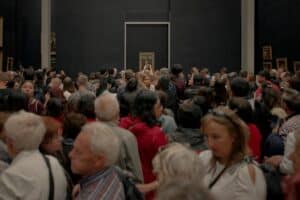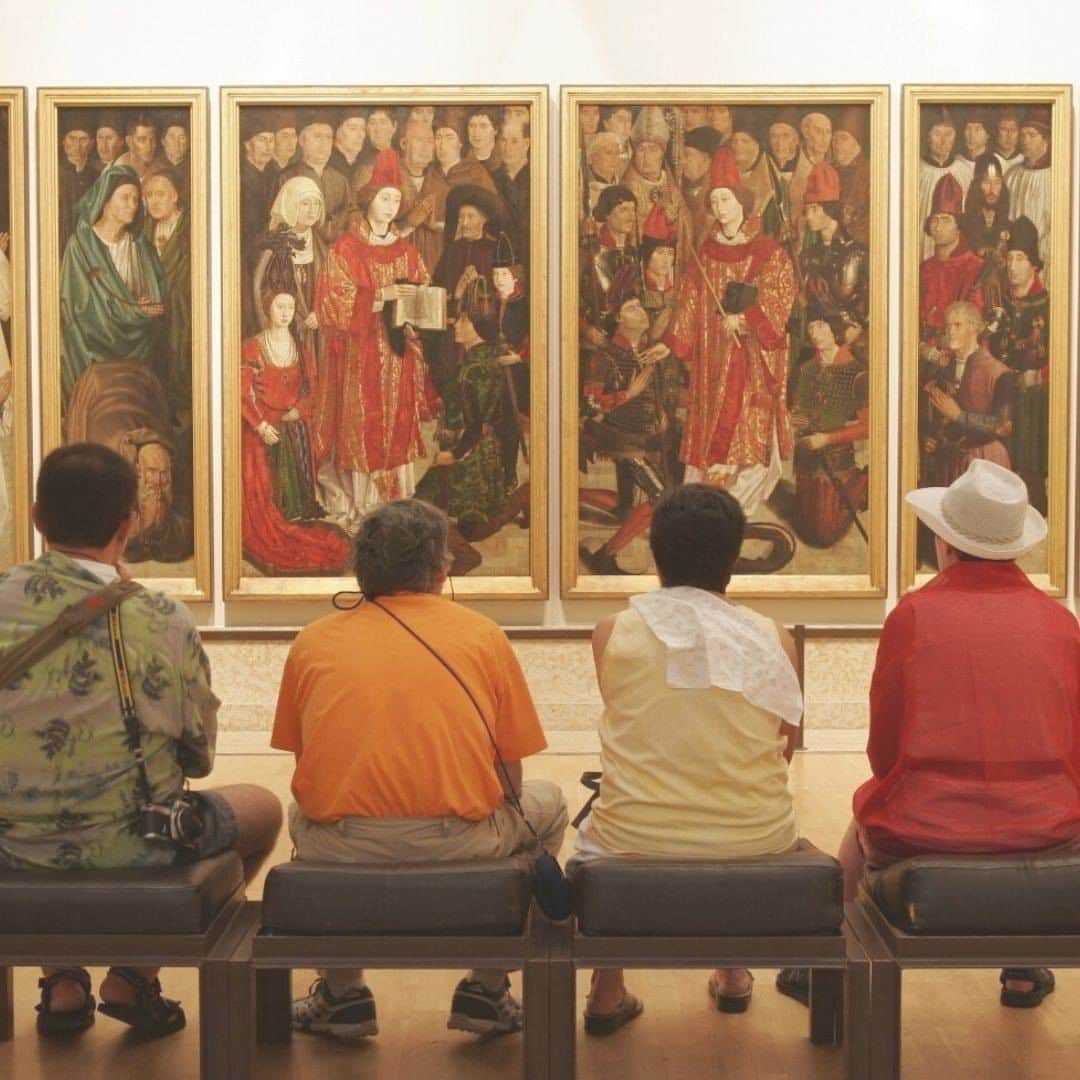In this article we will reflect on what a virtual exhibition is and what it means in terms of the appreciation of works of art.
Will it be a replacement or a complement and an incentive?
The virtual exhibition
Ten or twenty years ago it was necessary to leave the house to see a painting on display in a gallery or museum.
Excluding this possibility, it was necessary to look for the reference of the work in specialized art books.
Today, just swiping a finger across a screen is enough to appreciate works produced in the most diverse epochs of human history.
It only takes one touch to verify the author, discover related works, analyze historical context and learn technical details.
The virtual exhibition and museums
The Guggenheim Museum, the Museum of Modern Art – MoMA, in New York, the Tate Gallery, in London, are just 3 examples of the countless museums around the world that publish virtual exhibitions and databases on the works that belong to their collection.

Guggenheim Museum Bilbao
In addition to the collections, they address aspects related to the museums themselves, that is, to the building itself.
You may be interested in the article: Guggenheim Bilbao | Why are we going to the museum?
More accessibility of art
This supposed accessibility raises some questions.
The first concerns the work of art itself.
Is it, in fact, closer to the spectator, from the point of view of the production of knowledge?
Some questions arise here.
The first concerns the amount of information available about a work of art.
It will be up to the receiver to filter all the information received and establish his own parameters of appreciation.
Sometimes this task is not easy given the huge amount of data and information available.
The second concerns the aesthetic appreciation of the work of art as mere enjoyment.
A work of art can touch us, move us, inspire us or leave us indifferent.
Could this emotional relationship with the work of art be called into question by prior information forcibly formatted by academic or historical standards?
Or, on the contrary, will this information lead to a better and deeper personal appreciation?
These questions remain in the air but, without a doubt, digital exhibitions are the way to globalize and make art accessible to everyone.
Virtual exhibition – the new challenges
The Covid 19 pandemic has brought new problems, but also new challenges for museums, galleries and all art curators.
The impossibility of physical visits to exhibitions and museums or, when possible, the restriction of the number of people and safety rules posed serious organizational problems.
Will mega exhibitions with thousands of visitors or endless lines be a thing of the past?
Is the image below, published in the New York Times in November 2020, no longer part of our reality?

Credit – Elliott Verdier for The New York Times
What was already a trend – digital exhibition – as an alternative to physical visits, became the way to communicate about art par excellence.
Virtual Exhibition
As a result, digital exhibitions have multiplied, at a rate never seen and never expected.
Museums are among the institutions most affected by the pandemic, in some cases with catastrophic consequences and closure.
And they were the first to use virtual exhibition to communicate about art.
From virtual exhibition via Google Arts & Culture to full digitization of collections, including visits to physical exhibitions on video and explained by curators, we have access to countless new forms of digital communication.
Virtual exhibition – the challenge of art curation
The challenges of art curation are immense and never before has imagination, daring and the ability to innovate been so important to art curators.
But there is one thing that has not changed: an art exhibition, whatever its format, is always a communication project.
No matter how interesting and attractive the digital tools used are, an exhibition always requires rigorous prior work:
– investigation
– definition of themes and objectives
– definition of target audiences
– schedule
– choice of team and “works”
– assembly (although virtual, choosing suitable digital tools and methods is very important)
– disclosure
– reception of visitors
– monitoring and evaluation of results
The role of the art curator is also to produce exhibitions in digital format.
But always taking into account the exhibition project.
The use of apparently simple digital tools requires even more work, attention and rigor on the part of art curators.
Online course Art Curating – Exhibition
At the end of the art curating online course, participants will learn how to organize an art exhibition in its various stages, from initial planning to evaluation:
- what an exhibition is;
- what is the role and tasks of the art curator and the art curation team;
- planning and scheduling an art exhibition;
- carry out the assembly of an exhibition and its evaluation;
- establish the appropriate means to communicate with the public;
- understand exhibitions in the digital age.

